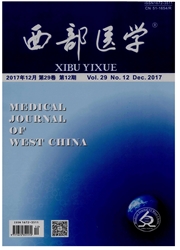

 中文摘要:
中文摘要:
AIM:To investigate the role of suppressor of cytokine signaling 3 (SOCS3) silencing in epithelial-mesenchymal transition (EMT) involved in a human hepatocellular carcinoma MHCC97H cell line.METHODS:MHCC97H cells were transiently transfected with SOCS3 small-interfering RNA (siRNA).Morphological changes of the transfected cells were observed under microscope.Expressions of E-cadherin,Vimentinand α-smooth muscle actin (α-SMA) were identified with immunofluorescence.Furthermore,protein expressions and mRNA levels of characteristic markers of EMT (E-cadherin,Vimentin,α-SMA and Snail) were detected by Western blotting,quantitative real-time polymerase chain reaction.Transforming growth factor-β1 (TGF-β1) levels in the supernatant were measured with enzyme-linked immunosorbent assay.RESULTS:The transfected cells with SOCS3 siRNA showed a morphological alteration from a typical cobblestone morphology to mesenchymal spindle-shaped and fusiform features.SOCS3 siRNA lessened immunofluorescent expression of E-cadherin,but elicited immunofluorescent expressions of Vimentin and α-SMA in MHCC97H cells.More importantly,compared with the negative control,depletion of SOCS3 resulted in the decrease of the epithelial marker E-cadherin (P 【 0.05),and the increase of the mesenchymal markers Vimentin and α-SMA and the transcription factor Snail in MHCC97H cells (P 【 0.05).Moreover,compared with the negative control,SOCS3 siRNA evidently enhanced TGF-β1 secretion in MHCC97H cells (200.20 ± 29.02 pg/mL vs 490.20 ± 92.43 pg/mL,P 【 0.05).CONCLUSION:SOCS3 silencing is able to promote EMT in MHCC97H cells via changing the phenotypic characteristics and modulating the characteristic markers.
 英文摘要:
英文摘要:
AIM: To investigate the role of suppressor of cytokine signaling 3 (SOCS3) silencing in epithelial-mesenchymal transition (EMT) involved in a human hepatocellular carcinoma MHCC97H cell line. METHODS: MHCC97H cells were transiently transfected with SOCS3 small-interfering RNA (siRNA). Morphological changes of the transfected cells were observed under microscope. Expressions of E-cadherin, Vimentin and α-smooth muscle actin (α-SMA) were identified with immunofluorescence. Furthermore, protein expressions and mRNA levels of characteristic markers of EMT (E-cadherin, Vimentin, α-SMA and Snail) were detected by Western blotting, quantitative real-time polymerase chain reaction. Transforming growth factor-β1 (TGF-β1) levels in the supernatant were measured with enzyme-linked immunosorbent assay. RESULTS: The transfected cells with SOCS3 siRNA showed a morphological alteration from a typical cobblestone morphology to mesenchymal spindle-shaped and fusiform features. SOCS3 siRNA lessened immunofluorescent expression of E-cadherin, but elicited immunofluorescent expressions of Vimentin and α-SMA in MHCC97H cells. More importantly, compared with the negative control, depletion of SOCS3 resulted in the decrease of the epithelial marker E-cadherin (P < 0.05), and the increase of the mesenchymal markers Vimentin and α-SMA and the transcription factor Snail in MHCC97H cells (P < 0.05). Moreover, compared with the negative control, SOCS3 siRNA evidently enhanced TGF-β1 secretion in MHCC97H cells (200.20 ± 29.02 pg/mL vs 490.20 ± 92.43 pg/mL, P < 0.05). CONCLUSION: SOCS3 silencing is able to promote EMT in MHCC97H cells via changing the phenotypic characteristics and modulating the characteristic markers.
 同期刊论文项目
同期刊论文项目
 同项目期刊论文
同项目期刊论文
 期刊信息
期刊信息
